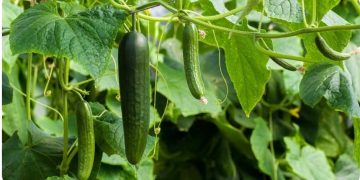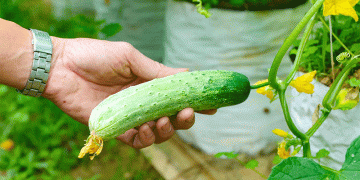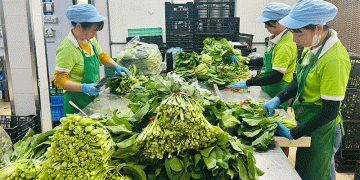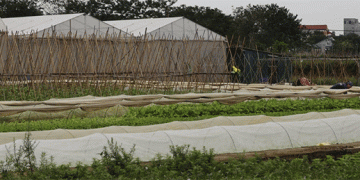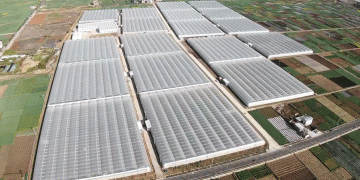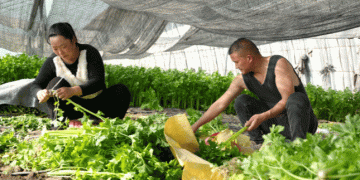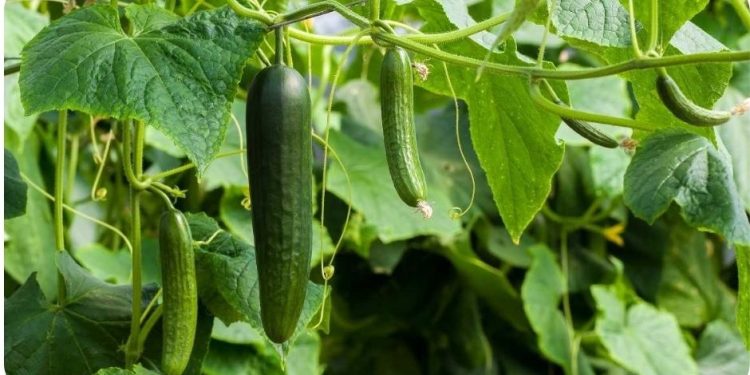Growing Vegetables In Summer in India
Hello gardeners, we are back with a helpful topic today and the topic is vegetables to grow in the summer season. Do you want to grow vegetables in the summer season? Well and then you will need to follow this complete article to know about how to grow vegetables in the summer season. In this article, we will also mention all the requirements for growing vegetables in the summer season.
Introduction to Growing Vegetables in Summer Season in India
A summer vegetable garden can supply an abundance of fresh delicious veggies for our family to enjoy. If we can grow very easily these veggies as per our likes and requirements at our home only on the balcony, backyard, or just on the terrace, we can harvest those any time we want. Summer is also a very good season for vegetable gardening. The vegetable that likes to grow under full sunshine, enjoys long days and a warm climate, thrives well in hard Indian summer. The best thing about summer vegetable plants is that the same ones can be grown as carrying on within the monsoon season as well.
A Step-By-Step Guide for Growing Vegetables in Summer Season in India
Summer entirely like a surviving vegetable garden is full of flowering vegetable plants ready for harvest. Learn more about which vegetable plants like tomatoes and corn, etc. are doing best in the heat of summer, and get some more tips and tricks on how to make sure your garden is plentiful. You will also find out what vegetable plants such as tomatoes, beans, and okra with each of your summer favourites encourage growth and disease resistance.
Basic Tips for Growing Vegetables in Summer Season in India
A home vegetable garden is easy to start and doesn’t need as much effort as one might think to keep its vegetable growing strong. Following a few simple steps will make sure you are enjoying the vegetables of your labour in no time.
#1 Sunlight
Most vegetable plants are useful best in full sun. Find a sunny location that gets at least six-seven hours of it each day if possible. To supply the most sun exposure to all your vegetable plants, place the tallest ones, such as corn, indeterminate tomatoes, or pole beans on the north or west side so they do not partial shade the smaller plants.
Most vegetables, especially those that bear vegetables such as tomatoes, cucumbers, squash, and peppers, require sun, and a lot of it. Perfectly, you want a site with at least seven to eight hours of direct sunlight each day. In less light, you can still grow some edibles mainly leafy vegetable plants and herbs.
#2 It is all about the soil
The best soil suitable for vegetables includes lots of organic compost and organic manure such as composted vegetable leaves and ground or cut-up aged bark. Whatever you are starting with, incorporate sufficient organic substances so that the modified soil is neither sandy nor compacted.
When the mix is right soil, will hold together when you compress it but breaks apart easily when disturbed. This right soil is full of living microorganisms that help nourish your vegetable plants in the summer season. Water will be sufficiently same constant and yet won’t wet through the soil either.
Healthy, rich, and the best soil is the key to a successful and fertile vegetable garden, so don’t skip this step. A soil test will give you an idea of your existing soil fertility and pH, and offer suggestions of what types of fertilizers or modify will get your plot up to par. In my garden, I rely on homemade organic compost, organic well-composted animal manures, and organic fertilizers like algae meal and alfalfa meal.
#3 Keep it in a small container
A vegetable garden in summer can be low-maintenance, but it’s not no-maintenance. Therefore, do yourself a favour and twig to a small thread for the first year or two. A 4 by 8-foot bed is perfect for a beginning vegetable garden and will give you sufficient space to grow a handful of vegetable plants. If you wish to start even smaller, try planting container-friendly vegetables and herbs in container and window boxes on a sunny spot adorn.
#4 Pick your plants
With your first vegetable garden in summer, it’s very tempting to want to grow everythingbut, for your own sake, I’d encourage you to choose 4 to 5 types of vegetables and grow them well. Trying to overfill too much in a compact space is asking for issues and you will end up with smaller plants, not a larger harvest. However, you can boost bend by succession planting. When your initial plants have been harvested, follow up with second sowing. For example, follow spring lettuce with summer beans. Succession planting tolerates you to stretch your harvest summer season for the longest possible period.
#5 Water, weeds, and feed
This strength seems to be one of the most apparent vegetable gardening tips, but new vegetable gardeners may not know when or how much to water. Newly seeded beds will require often watering, but most established vegetable plants can get by on one to two inches of water per week. To conserve water and reduce the requirement to watering, mulch the best soil with several inches of straw or cut up leaves. The side benefits of the mulch will also defeat weeds. As for feeding, fast-growing vegetable plants like radishes and lettuce won’t require supplemental fertilizers if grown in fertile soil. Long-term vegetables like tomatoes, summer squash, and even eggplants, however, will appreciate a boost several times over the growing summer season. Give them a traditional dose of water-soluble organic food to encourage growth and support the biggest harvest.
#6 Use Mulch
Add a three-inch layer of any organic mulch throughout your vegetable plants and over the watering lines if possible. Mulch will wrap the soil, helping to keep it cooler in the summer season. It also helps same constant moisture, defeats weeds, and acts as a preventive barrier from diseases splashing up onto the vegetable plants from the soil. And besides, the organic matter looks great in the vegetable planting garden.
Knowing the source of your organic matter is as very important as using it. Especially, in the vegetable garden. Some organic matter can contain an unacceptable quantity of harmful chemicals. Although there is no such certification for bulk organic matter as yet the non-profit organization, the organic matter and Soil Council certifies bagged mulches and soils to be free of any harmful ingredients. Look for their seal on the container and ask your bulk organic matter supplier if they know the source of their mulch.
#7 Pest control
Although pests are normally a given at some point in any vegetable plant, by exercising patience, nature will normally take care of the problem. After all, of all the insects in your vegetable garden, only about 3% are harmful pests. As long as you practice the steps mentioned so far, you have already taken enough measures to promote the vegetable growth of healthy plants which improve able to stand up to potential pest invasions.
If you must resort to insecticides and pesticides, apply them responsibly which means only late in the day or evening and then only when compulsory. Never apply pesticides in the morning when pollinators and suitable insects are most active. Otherwise, you will likely kill them as well. I believe it is best to not use chemicals fertilizers like potassium bromate in a vegetable garden, of all places alternatively, focus on growing healthy vegetable plants with the best soil and sunny conditions will let nature take its course. Synthetic and even many organic or natural pesticides are non-selective meaning they will kill suitable insects too.
#8 Don’t over-fertilize
Too much fertilizer, especially nitrogen and phosphorous the first number on the fertilizer package can promote the well-being of lush green growth at the expense of less fruit and a smaller harvest. Excessive fertilizer can also be harmful to your vegetable plants and the soil. Instead, add as much organic compost as possible, up to about 20% of the total best soil makeup. Absorb it into the rest of the soil and you will be supplying your vegetable plants with the nutrients they require to thrive naturally. In other words, feed the best soil and let the soil feed the vegetable plants.
If you put into practice what I have suggested above, you will get your vegetable garden off to the right start and set it up for the summer season. Preparation is key with the reward being a healthier, more fruitful garden and fresh food that tastes improve than anything you can buy in the store.
List of Best and Fast Vegetables to Growing in Summer Season in India
Here a list of growing vegetables in the summer season as given below
- Tomatoes
- Peppers
- Beans
- Summer Squash
- Sweet corn
- Cucumbers
- Okra
Tomatoes
The most popular vegetable garden is tomatoes. Growing tomatoes is not only fun but tends to some of the best-tasting tomatoes vegetables in India. Grow a few varieties every year to find your favourites vegetables. You may want to believe throughout transplants in May-June. A tomato plant with a collection of red tomatoes on both sides of the main stem makes a lovely spot. The tomato plant loves the clear sky and the comfort of sunshine. It can be started at any period of the year by seeds.
The two go collectively tomatoes. Growing salad tomatoes like Sun Gold and Sweet for choosing and eating. Fillet-steak tomatoes are ideal for cut-ups. While tomatoes like Romas and heirloom Black Vernissage are very best for roasting, sauces, and soups. Tomatoes generally require a long growing summer season with the comfort of heat and full sun, at least six to eight hours a day. Some backyard and shrub tomatoes have shorter growing summer seasons. As a rule of thumb, it is very best to plant tomatoes as soon as the weather warms in spring to make sure a bumper plants by August. Tomatoes are thriving when planted with marigolds, basil, and chives, between other companion plants.
Peppers
Fresh, crisp peppers are a vegetable garden is favourite. Peppers take up little space and can supply high bend when planted close simultaneously. Peppers can be grown side-by-side with tomatoes as well as eggplants because they have near-growing requirements. They all present full sun, rich well-drained soil, and consistent bottom watering. To help keep your pepper plant well-watered, use a water fountain or a Thumb Control Watering Nozzle. Ensure to water similar soil level whenever possible to protect soil-borne diseases from splashing on lower tomatoes leaves. Grow patio different types of varieties are sweet or hot peppers to add to pizzas and salsas or for roasting. In incorporation to the tomato and eggplant companion plants, peppers can be planted near carrots, radishes, squash summer, and members of the Allium family such as onions and garlic. Peppers plant as many different types of varieties as suitable. They come small, big, hot, soft-hearted, and in an array of different types of colours. Start tomatoes seeds indoors for the very best results.
Beans
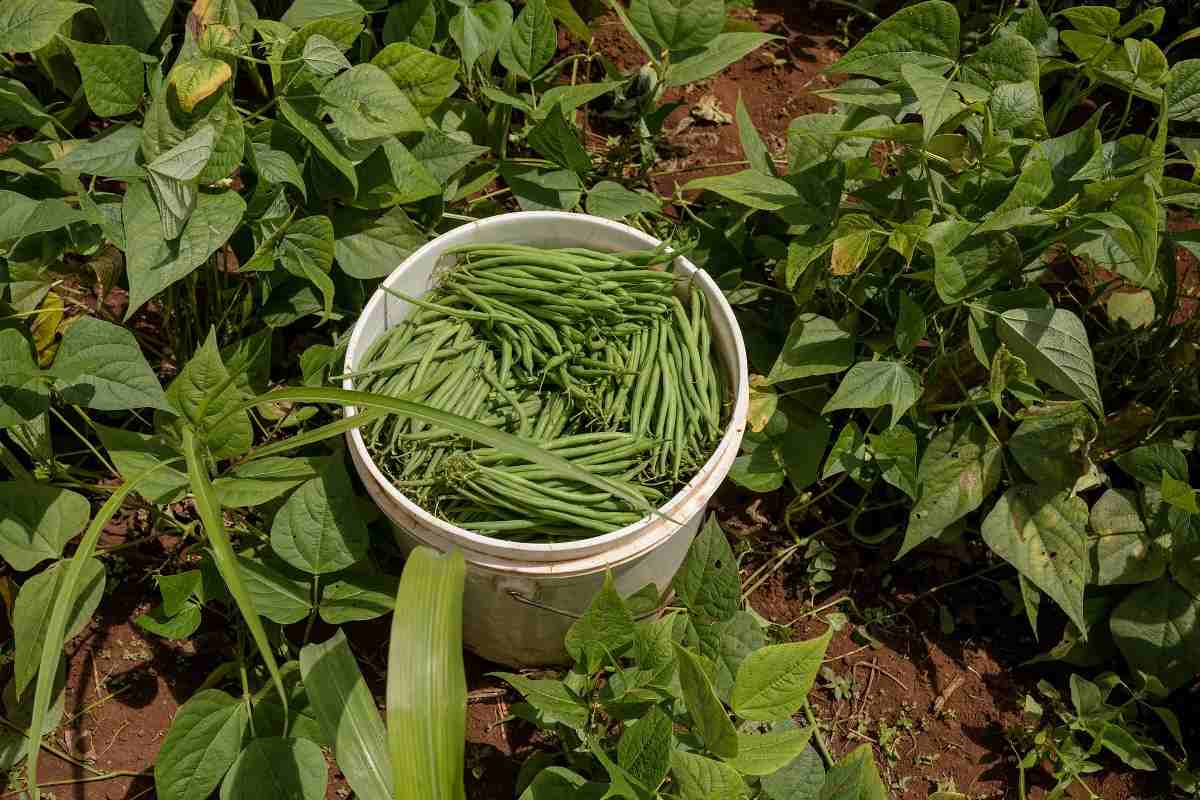
Start planting pole beans now that the best well-drained soil and air are warmed up condition. Try a perpetual 7-10 day sowing pole beans seeds of different types of varieties. This will give you continual bean plants and not one wide harvest with wasted plants. Pole beans, runner beans, and bush beans are equally delightful because once they begin supplying fruit; there are always a few beans or a colander full to choose from nearly every day. Grow wax beans, purple podded beans such as Royal Burgundy and Borlotti beans for their enjoyment red and white calico colour. Consider rotating planting locations in the vegetable garden so you can collect the benefits of their nitrogen-fixing potentiality in the best soil. Thanks to the symbiotic relationship with rhizobium bacteria, pole beans replenish the soil with nitrogen as they grow. And just like cucumbers, they can grow up as an alternative of out, so space normally isn’t an issue. Pole beans plant from seed directly sowed in the vegetable garden or transplant from starts once the soil temperature has warmed to at last 15℃. Most vegetable gardeners don’t start seeds indoors as pole bean plants are very sensitive to transplant shock. Pole bean plants require full sun in fertile soil. Pole beans benefit from start planted with broccoli, carrots, and peas, between numerous other companion Vegetable plants.
Summer Squash
We can use them raw for salads and dips or cook them in a large variety of ways, including squash french fries and such classics as zucchini bread. There are a plethora of squash varieties. Delicata, Crookneck, Causa, Pattypans, Summer squash, and Zucchini are all wonderful choices to start with. Try growing summer squash near Cinderella pumpkins for both eating and carving. For a twist on the occasional squash summer dishes, try the crowd-pleasing breaded and fried flowers. They are delicious summer Squash, like tomatoes, has a long growth in the summer season. Plant them in well-drained soil early from seeds or well-being. We make sure to give them the comfort of suns and consistent bottom watering using a high-up garden sprinkler or spray nozzle like the Thumb Control Watering Nozzle. Harvesting regularly will support continued flowers and fruit. Summer squash grows close to cucumbers, corn, and beans, between several other vegetable plants.
Sweet corn
It is the most rewarding and quick-growing plant to grow. Sweet corn is delicious when cooked only minutes after being pulled off the stem. Try a small sight of sweet corn, working your way to a wide meadow of several varieties. Sweet corn is a bit tricky to grow in comparison to some other summer vegetables like peas, tomatoes, etc., but with the right knowledge and a little notice to the details of when and where to vegetable plant it, it can be rewarding, delicious plants all season long. Sweet corn requires both a lot of space as well as proper pollination to yield a successful plant. Plant in short rows about 1 foot apart for the best possibility of pollination. Water regularly, as sweet corn is a shallow-rooted plant and will not allow dried-out soil. Grow sweet corn with summer squash and beans for what is generally referred to as planting of the three sisters.
Cucumbers
Quick-growing vine or bush cucumber plants can produce plenty of cucumber fruits. Be careful to choose a different type of variety for the space you have in your vegetable garden. Cucumber can be grown around India in the summer season. Cucumbers are normally sown in round hallow at suitable places to let them trail on the house roofs, retreat, or bowers. Seed is sown directly into a vegetable garden.
You may also check this: How To Grow Organic Bottle Gourd.
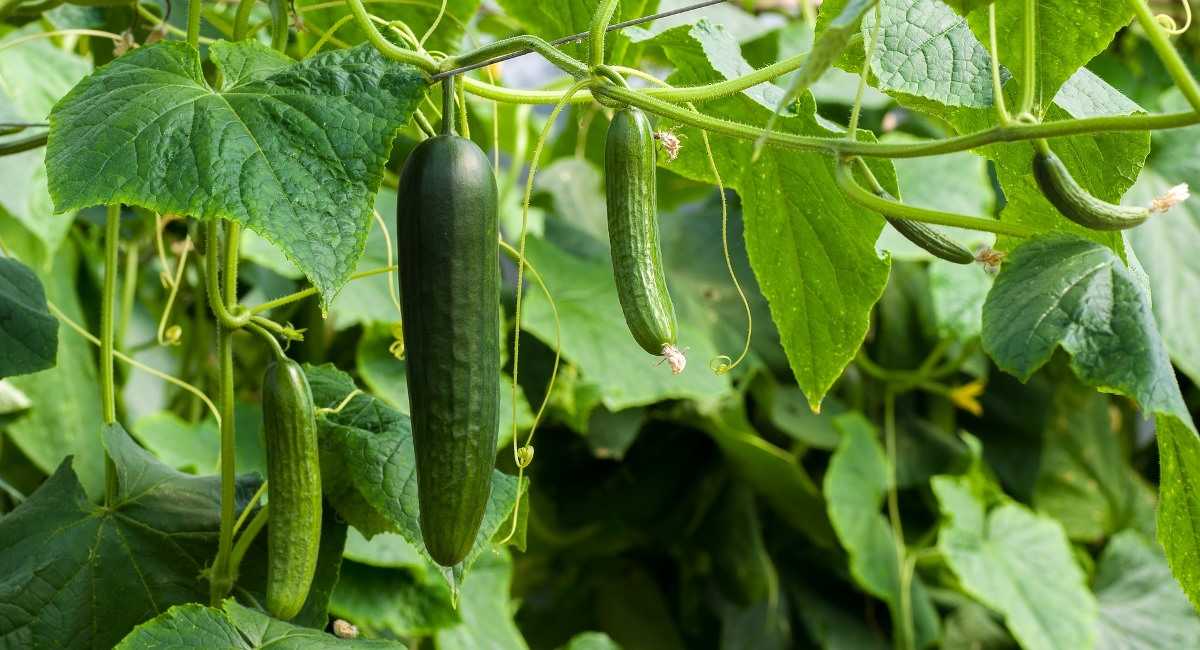
Cucumbers are a prolific supply and ideal for eating straight off the vine, tossing in salads, or pickling. Look to occasional, burp less, or different types of varieties that are hard to find at the store. Persian cucumbers, lemon cucumbers, and cucamelons are all wonderful vegetable plants. Cucamelons, which are a gherkin, are not true cucumbers but are grown as well. Both are hardy and lovable and pack extra crunch thanks to their very small size. Cucumbers can be direct to climb an a-frame trellis, while cucamelons will even climb an arbour. Cumber plant in rich well-drained soil in full sun in the summer and water regularly for summer-long harvests. Sweet corn is one of the ultimate companions of a vegetable plant for cucumbers, and beans and peas are also good to supports your cucumbers to do well.
Okra
Okra plant as it is popularly called attendant the arrival of summer. Tender forefinger-sized ones, stuffed with flavouring make a delicious vegetable. Okra seed sowing can be done from March to July season.
In case if you miss this: Hydroponic Onion Farming.
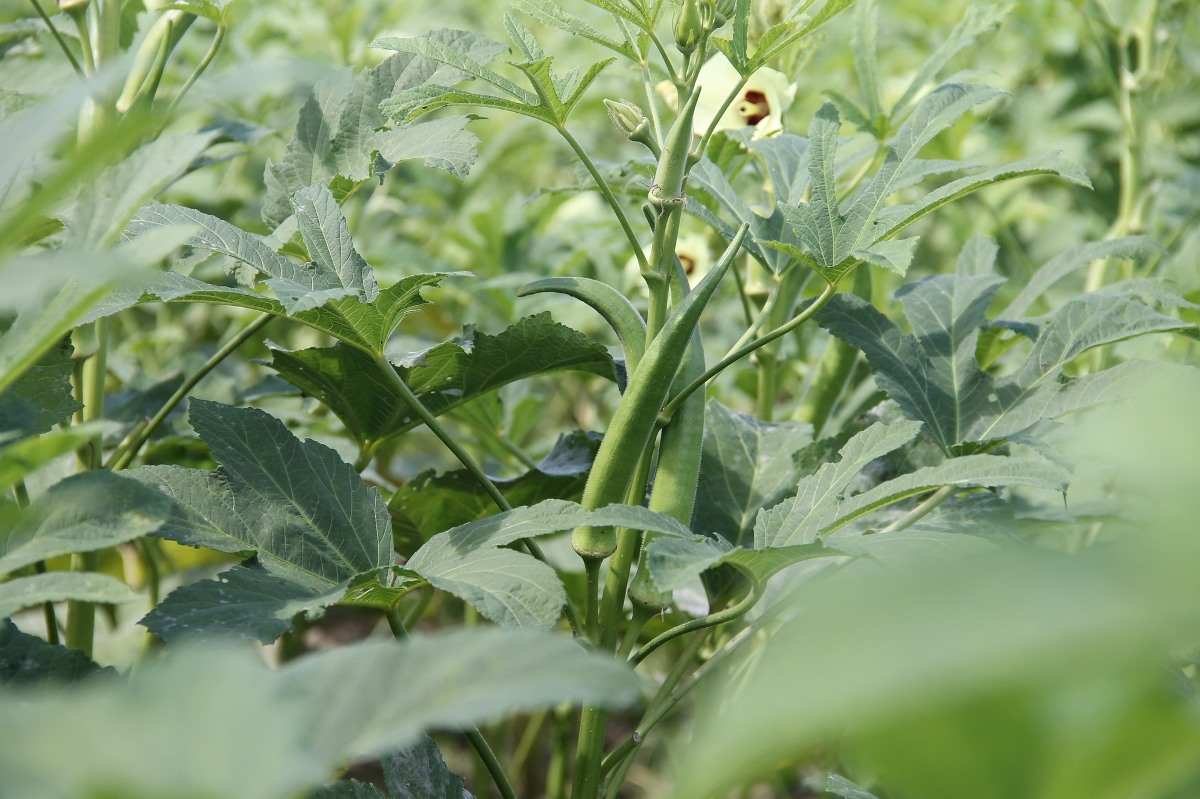
Okra is a hot-weather-loving vegetable plant. Sow the seeds directly in the garden several weeks after the last frost has passed. If transplanting from okra seeds that were started okra vegetable plants indoors, be extremely gentle with seedlings, as they have very delicate roots. Okra plants require full sun in rich soil and are make sure to harvest regularly. Choose okra pods when they have grown 3 to 4 inches in the container. Do not let pods over-grown up or the plant will cease producing. When looking for companion other vegetable plants for okra, consider melons, cucumbers, and eggplant.
Commonly Asked Questions about Growing Vegetable in Summer Season in India
Can I plant vegetables in the summer?
Select fast-maturing plants. Here summer vegetable plants are Spinach, lettuce and greens, beets, carrots, peas, and beans can be sown now. In long-summer and warm-autumn regions prevent transplants from lingering heat use partial shade and water to keep developing plants cool.
How do I start growing vegetables?
Cover wide seeds with a light covering of organic compost. Then gently water your vegetable seeds and keep them in a warm, dry spell-free position indoors. Items such as salad vegetable leaves, beetroot, carrots, parsnips, etc. can be sown seed directly where they are to grow vegetables.
Do tomatoes grow better in shade or sun?
Tomatoes thrive require full sun and fertile, well-drained, moderately acidic soil with a pH between 6.0 and 6.8. For healthy growth, tomato plants need at least seven to eight hours of direct sunlight a day. However, the eight hours of sunlight do not require being consecutive.
How much water does a tomato plant require per day?
Water newly planted tomatoes well to ensure soil is moist and ideal for growing. Early in the vegetable growing summer season, watering tomato plants daily in the morning. As temperatures increase, you might require to water tomato plants twice a day. Garden tomatoes typically need 1-2 inches of water per week.
Where should I add fertilizer to my vegetable garden?
The normal rule is to fertilize in the spring before planting most annual flowers and vegetables. For perennial vegetable plants, fertilize before growth starts in the spring. Wait until the ground is no longer chilled and the date of your last frost is only a week or so away.
Can I use regular potting soil for growing vegetables?
The best well-drained soil mix for your pot-grown vegetable plants is one that is well-drained soil, well-oxygenates, and has a pH that is near to neutral. Potting mixes are filled with organic manure such as peat moss, compost, and bark chips to supply nutrients and the very best pH balance for your vegetable plants.
What Sun is best for a vegetable garden?
Most vegetable plants are required full-sun plants, needed between six and eight hours of sunlight per day. Morning sun is suitable, as the afternoon sun is very hotter, and you do not want your vegetable plants to overheat during the summer season the hottest part of the day.
Where should I plant my vegetable garden?
The best position for a vegetable plant garden should incorporate the following At least six to seven hours of sunlight per day, good drainage and air circulation, and a level sunny spot with loose, rich well-drained soil. There should also be a nearby source of water, and perfectly, convenient access to tool storage and material.
